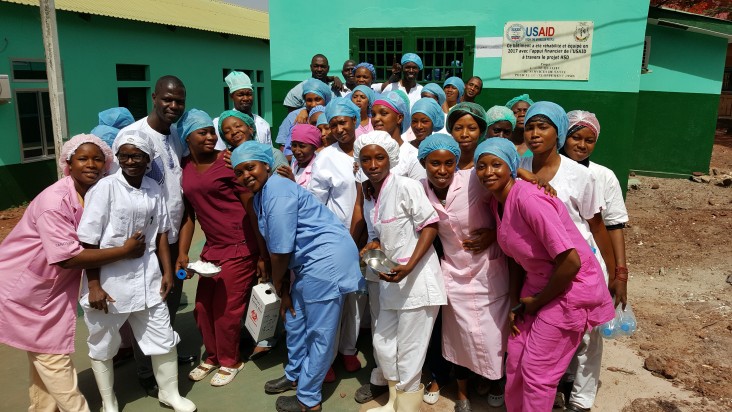Speeches Shim

May 2018 — Mariama Keita has been a midwife for more than 30 years now at the maternity center of the regional hospital in Mamou, a prefecture in central Guinea. As the head midwife, she and other service managers have received training to better accommodate patients and make them feel more comfortable.
The customer service training is part of USAID’s Health Service Delivery project, which intervened in 2016 to rehabilitate the Mamou regional hospital and provide it with modern equipment. The upgrades have resulted in significantly improved services and more patients. The hospital now has a brand new maternity center that treats about 30 pregnant women every day compared to five to 10 patients earlier, when distrust of the facility was at its worst.
“Before, there was a profound distrust between the patients and us because of the stigma of the Ebola virus disease,” said Keita. “But even before Ebola, people avoided the hospital because of the insalubrity of the place. In the past, the maternity and surgery were in the same room. If you had a woman giving birth and there is an emergency surgery to perform on a man at the same time, both operations would take place in the same room. Now we have a new maternity ward separate from the surgery room.
“When we had three women giving birth at the same time, only one could use the bed and the other two would give birth on the floor because we had just one old bed in the maternity. We used candles, lamps and flashlights during the delivery because of the frequent power cuts. Now we have new beds and solar panels for auxiliary power supply 24 hours if necessary.”
Other assistance provided by USAID includes specialized equipment to deliver babies of women in critical labor condition, and wells and water tanks to supplement the water supply. The hospital also has a new incinerator that works on both solar energy and gasoline. Previously, medical waste was burned in the open — a dangerous practice.
“One of our main problems here was lack of water supply. We often had to go to about 400 to 500 meters outside the hospital to get water,” said Keita. “We even had to use the hospital ambulance as a water truck to get more water in the building. Today, we have wells and running water in the entire building and enough water tanks for auxiliary supply.”
USAID is working with the Government of Guinea to help reduce the country’s post-Ebola child and maternal mortality. The Health Service Delivery project has trained more than 700 health workers and has rehabilitated and equipped four hospitals and 14 health facilities with modern medical equipment to provide high-impact maternal and child health services.
LINKS

Comment
Make a general inquiry or suggest an improvement.